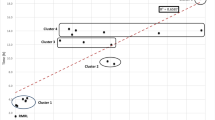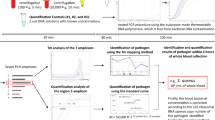Abstract
OBJECTIVE:
With the newer techniques of culture analysis such as the BACTEC 9240 fluorometric detection system, detecting bacteremia in the neonate may be possible in a significantly shorter time. We hypothesized that neonatal bacteremia can be detected in less than 48 hours by this method.
STUDY DESIGN:
Our study included a retrospective review of 613 blood cultures obtained during the period August 1, 1995 to March 18, 1996 taken from 325 infants who had cultures drawn with a sepsis work-up and/or repeat cultures who had initial positive cultures in our Neonatal Intensive Care Unit. Results of blood cultures were studied in conjunction with the variables of body weight, gestational age, organism grown, complete blood count (CBC), and timing of positive cultures. Statistical analyses were performed using Fisher’s and two-tailed Student’s t tests.
RESULTS:
The results showed that of 325 infant blood cultures 49 (15%) were positive. Of these, 64% were coagulase-negative staphylococci, 14% viridans streptococci, 8% Escherichia coli, 4% Enterococcus sp., 4% Pseudomonas sp., 2% Enterobacter sp., 2% Klebsiella sp., and 2% Candida albicans. Of the positive blood cultures taken from infants not on antibiotics at the time of culture, 54% were detected positive at 18 hours, 71% at 24 hours, and 100% by 30 hours. Detection time by organism type was as follows: coagulase-negative staphylococci, 21.7 hours; viridans streptococci, 15.6 hours; E. coli, 7.5 hours; Enterococcus sp., 12 hours; Enterobacter sp., 5 hours; Klebsiella sp., 10 hours; and Pseudomonas sp., 12 hours.
CONCLUSION: Our results indicate that the BACTEC 9240 fluorometric detection system helps in early identification of neonatal bacteremia (in 24 to 30 hours), with Gram-negative organisms being detected earlier than Gram-positive organisms (p < 0.05) and having significantly higher immature neutrophils in a CBC (I:T ratio of ≥ 0.2 (p < 0.001). Early detection of neonatal bacteremia using this method will allow earlier diagnosis and appropriate treatment of the potentially bacteremic and bacteremic infant.
This is a preview of subscription content, access via your institution
Access options
Subscribe to this journal
Receive 12 print issues and online access
$259.00 per year
only $21.58 per issue
Buy this article
- Purchase on Springer Link
- Instant access to full article PDF
Prices may be subject to local taxes which are calculated during checkout
Similar content being viewed by others
Author information
Authors and Affiliations
Rights and permissions
About this article
Cite this article
Pauli, I., Shekhawat, P., Kehl, S. et al. Early Detection of Bacteremia in the Neonatal Intensive Care Unit Using the New BACTEC System. J Perinatol 19, 127–131 (1999). https://doi.org/10.1038/sj.jp.7200124
Published:
Issue Date:
DOI: https://doi.org/10.1038/sj.jp.7200124
This article is cited by
-
Significance of Hematological Scoring System (HSS) in Early Diagnosis of Neonatal Sepsis
Indian Journal of Hematology and Blood Transfusion (2011)
-
Prevention and Treatment of Nosocomial Sepsis in the NICU
Journal of Perinatology (2004)



